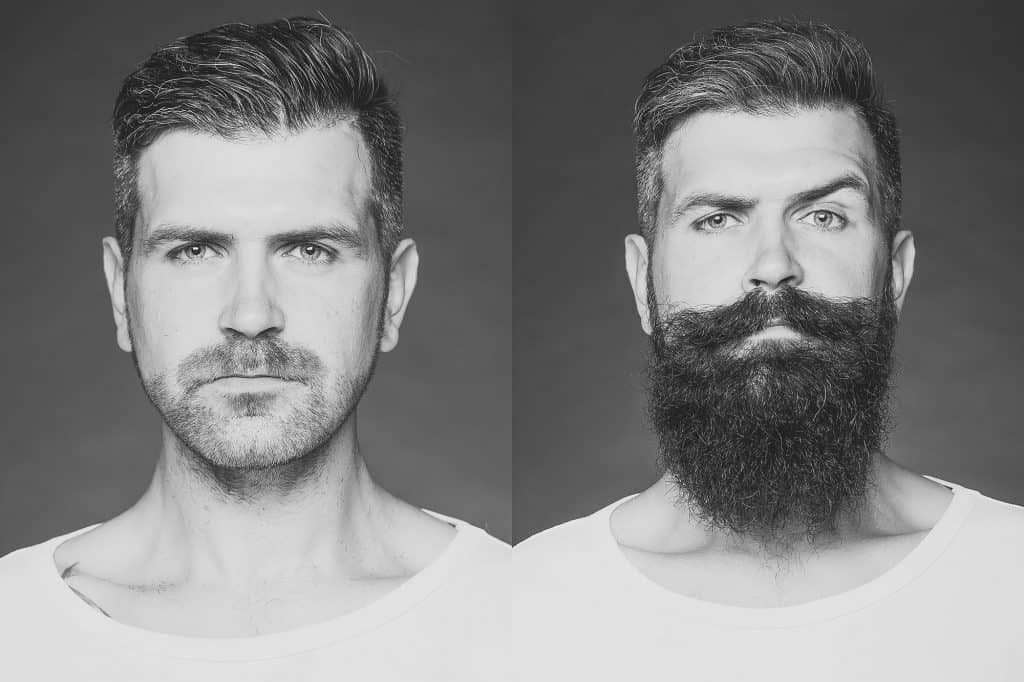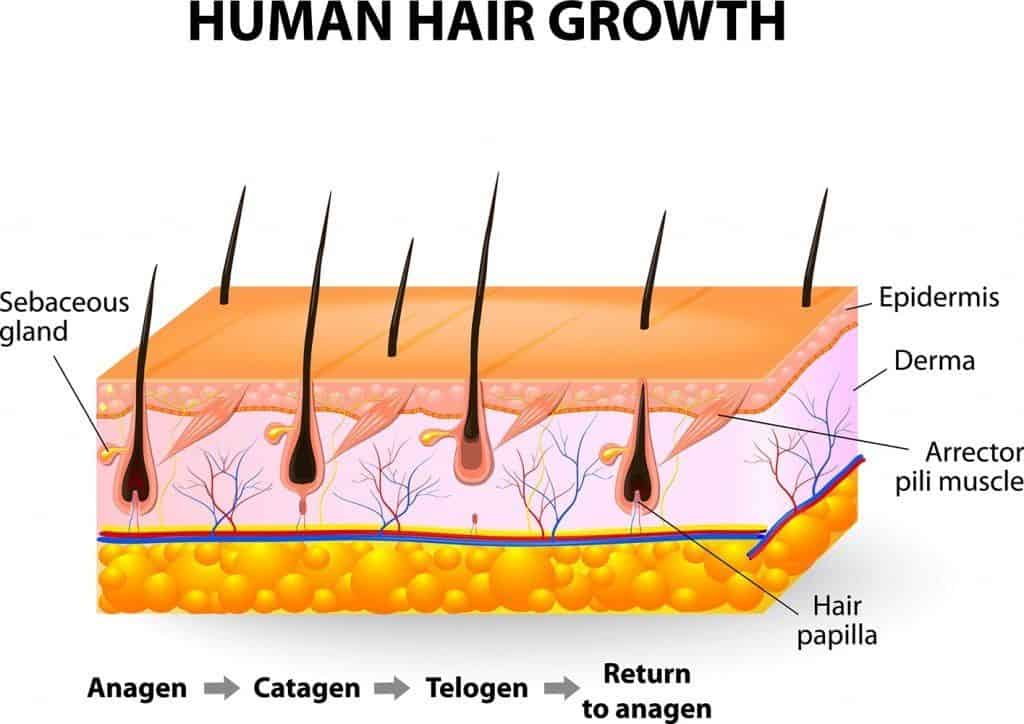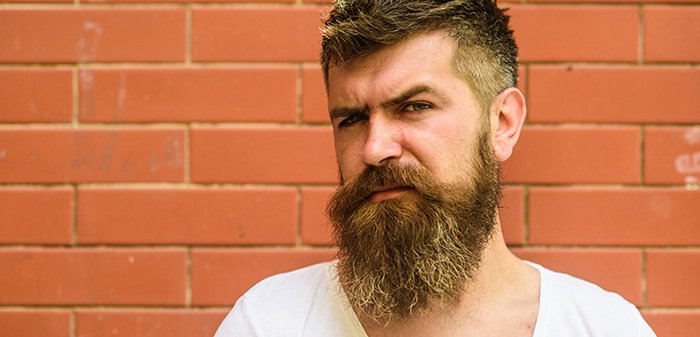The 7 Stages of Growing a Beard: Here is What You Can Expect

Whether you’ve pondered it for a long time, or decided a couple of days ago that there’s no better time than now, you’re ready to grow a beard. Whatever your reasons, we bow and tip our caps to you.
There is a lot that goes into growing a stellar beard, one that you’ll truly be proud of, and you’ll experience several beard growth stages along the way. We want to help by discussing the various stages and what you’ll during each.
We’ll also offer some beard care tips and guidelines to help make your journey smoother. Growing a beard is a challenge and takes firm resolve, but we have full faith in you, and we’re going to be with you every step of the way. We also look forward to you joining the club of bearded brethren.
1. Getting Started: Week 1 & What to Expect When You’re Expecting (a Beard, That Is)
Let’s be honest – not a lot happens during the first week of beard growth.
True, there’s the excitement of getting started, and it’s like any journey during its initial stages, i.e., you feel the strength and freedom that comes with committing to doing something you’ve probably thought about for a long time.
There’s also the novelty of setting aside your razor and quitting shaving, perhaps for the first time since adolescence.
You may have also told some friends and family about your beard-growing plans because, if for nothing else, to stave off questions such as, “Did you forget to shave today?”
How much beard growth you have in Week 1 depends on several things.
For one, the rate of growth varies from individual to individual.
For every man who has a 5 o’clock shadow at the end of every workday, there’s a less hirsute gentleman who may not experience that kind of growth at the end of several days.
Genetics plays an important role in each’s beard growth rate, but there are also factors such as lifestyle choices – diet, exercise, stress levels, alcohol intake, smoking habits, etc. – that can enhance or hinder your beard’s growth.
Moreover, most men start from a place of little to no growth at all because they trimmed their facial hair follicles right to the skin during their last shave, or even left them a fraction below the skin.
That is, of course, if you used a quality razor that provided a clean shave.
Hair color is another factor that helps determine the appearance of your beard during the initial growth stages.
If you have dark hair, you’ll see more evidence of growth than you would if you have blonde or grey hair.
If you’re among the latter group, you may not see the hard proof for another week, so you have to learn to be patient.
Even if your rate of growth is less than average, you should still see a bit of stubble by the end of the first week of not shaving.
There’s typically no need to trim or shape your new growth at this point, although some men will begin to define the lines of their beard.
There’s nothing wrong with doing so, but many beard experts advise that you resist temptation and leave your trimming tools in storage for the first week.
But, again, so much depends upon your genes.
Genetics not only determine how fast your beard grows but also its ultimate length. If you have trouble growing a beard (it always seems to come in patchy), you can list your genes among the usual suspects.
The good news is that there are things you can do to counteract your beard’s natural patchiness, and there’s no reason you shouldn’t try to grow a full, dense beard that’s the envy of many.
Speaking of genes, three hair growth cycles affect every man, 1) anagen, 2) catagen, and 3) telogen. We’ve discussed the three phases in previous posts, but here’s a brief – very brief – tutorial.
- Anagen
Anagen is the growth phase in which hair grows approximately 1-inch per month. The anagen phase typically lasts three to five years.
- Catagen
Catagen signals the end of the growth phase. The blood supply to hair follicles slows and eventually stops while the hair becomes cut off from cells that produce new hair. The catagen cycle can last for up to three weeks.
- Telogen
Telogen is when hair follicles die and eventually fall off.
How long each cycle lasts isn’t the same for everyone – thanks to genetics.
Men with a shorter anagen phase will have more trouble growing hair, both on their face and scalp. Meanwhile, testosterone plays an important role in beard growth, as well.
Men with higher levels of testosterone have a better chance of growing a dense, full beard – but may lose scalp hair at a faster rate than other men. That’s why it is not uncommon to see bald men sporting full luxurious beards.
The first week of growth is a good time to prepare for the journey ahead, and that includes having the proper tools and products.
And you need to be mindful of the skin below your whiskers and, specifically, keeping it as healthy as possible.
That said, investing in a quality beard oil now will pay big dividends in the future.
As far as beard growth stages by week, this represents the least uneventful stage, however. Buckle up for the crazier ride ahead.
2. Stage 2: Let The Challenge Begin
The first stage of beard growth is not unlike a marathon runner covering the first few miles of a race.
His or her adrenaline is probably still pumping, they’ve settled into a comfortable pace and groove, and they may even feel that covering the 26.1 miles isn’t going to be much of a test at all.
But then something begins to ache. Or, suddenly things seem daunting – there’s still so far to go!
The second phase of growing a beard may seem like that.
The novelty may have worn off a bit, and it’s time to reintroduce your trusted razor to the process. And last, but sure as hell not least, you may experience beard itch in all of its glory (although there’s nothing glorious about it).
Dealing with beard itch can become a battle of wills during the early phases of beard growth. Many men give up and shave their new whiskers because of beard itch, and who really enjoys the incessant scratching that comes with it?
This phase also is referred to as the “awkward” stage of beard growth.
You may have thick growth around your chin and thinner growth on your cheeks, or vice-versa.
You may even start to panic because of the uneven growth but you need to stay the course and give your facial hair time to fill in naturally.
Resist the temptation to start trimming your beard – except if you feel it’s necessary to clean it up to maintain your best appearance at work.
Make small adjustments, if you must, and – if done correctly – they can help maintain your beard-growing enthusiasm.
So, why does my beard itch?
Perhaps the biggest cause of the dreaded beard itch is that you’ve spent many years shaving your facial whiskers.
Say what?
Yes, it’s true: regular shaving creates sharp edges that irritate the skin as your beard hair grows out.
Dry skin is another cause of beard itch. The skin beneath your beard can easily become dry, and as your beard grows it uses up your skin’s natural oil called sebum that helps keep the skin moisturized.
Not that you’ll only experience beard itch during the early growth stages. It can happen anytime your face has a covering of whiskers, but you may notice it more in the beginning because, for starters, you’re not used to it.
For another, the tenacity of beard itch may surprise you, and you may be unsure how to deal with it.
No matter the reason, know that you’re not alone. Most men experience beard itch. But the ones who power through it and learn how to treat it are the ones who reach the finish line with a full, magnificent beard.
A quick primer on how to deal with beard itch
The primary goal of this post is to cover the various stages of beard growth, but beard itch is such an impactful part of the process that it’s worth discussing – briefly – ways to deal with and treat it.
After all, a relentless beard itch is reason enough for some men to give up growing a beard for good. We’d hate to see that happen with you.
Keep your beard clean (illustration)
It’s always essential to clean your beard because it gathers a lot of dust and debris, and because dead skin cells accumulate and contribute to itchy feeling.
Make sure that you wash your beard – with a quality beard shampoo or wash – a few times each week, but not on successive days because it can dry out your beard and skin.
Keep your beard conditioned and hydrated (illustration)
A good beard conditioner softens the beard, makes it more manageable, and helps moisturize it to keep beard itch at bay.
Beard oil, meanwhile, is a must-have product that helps keep your beard and the skin underneath it hydrated throughout the day. Even just a few drops of beard oil each day will go a long ways toward relieving beard itch and making your beard more manageable.
Keep it trimmed (illustration)
While trimming your beard during the early stages of growth isn’t nearly as important as it is later, keeping it trimmed neatly will help relieve itchiness. You should also be on the lookout for ingrown hairs – another source of irritation and discomfort.
Combing and brushing (illustration)
Regular combing and brushing help your beard in so many ways, including that they to train beard hair follicles to grow in one direction while decreasing split ends, ingrown hairs, and subsequent itching.
Here are some other things to keep in mind during the 2nd phase of beard growth
The second stage of beard growth is a good time to begin exfoliating your beard.
To exfoliate means to rid your skin of dead cells, which naturally occur as the skin constantly goes through the rejuvenation process.
Look for a natural exfoliating face wash that you’ll rub right to the skin beneath your beard (as well as over the parts of the face that aren’t covered by a beard). In the process, you can stop potential in-grown hairs in their tracks.
Here’s another thing you may start to notice as your beard becomes more noticeable – beardruff.
Specifically, it’s the beard equivalent of dandruff that not only shows up on your beard, but on your clothes and anywhere else it may fall.
Fortunately, a good beard wash, when combined with your beard oil regimen, will help keep your whiskers beardruff-free.
While the temptation to trim your beard at this stage of the game may run high, it’s also not a bad idea to let it grow some more.
Even if it looks a bit unkempt, let it grow longer while giving you a better sense of what your bearded future holds. And that’s a pretty good place to be at this point.
Yes, your beard may itch, look messy, and force you to bury your razor in the backyard for fear of breaking down and using it, but you’ll start to see just how fantastic you could look with a full beard.
Perhaps the best news about this stage is that it won’t last forever. Your beard may look scruffy and cause you to question your initial commitment to growing a beard, but all we can say is that you need to stay the course.
Hang in there, because it’s going to get better – much better.
3. What’s next? Putting a Month, and More, Behind You in Your Beard Quest
After four to six weeks, or more depending on the rate at which you grow a beard, you’ll have a sizable beard. This is when things become interesting, fellas.
While you’ll earn a well-deserved pat on the back for reaching this milestone of the journey, there’s still plenty left to do.
Additionally, you’ll still have to contend with issues such as beard itch – which, to be honest, can loiter during every phase if you don’t take proper care of your beard – and a beard that may look a bit patchy if you’ve drawn the short straw in the DNA department.
You’ll have sizable areas of lush, beautiful growth, but also areas where density is lacking.
You may also see some grey in it. In fact, many men wonder why their beard gets grey patches before their scalp does, and there’s really no solid scientific reason for it.
Some say it’s because beard hair grows faster than the hair on your head. But, hey, unless you’re, ahem, a bit older than other bearded men in the room, grey hair isn’t something you have to worry about just yet, young man.
The hair above your lip (OK, OK, your mustache) is something to contend with at this point if you haven’t already.
While it’s still OK to hold off trimming your beard at this stage, your mustache probably needs some work, unless you don’t mind it creeping into your mouth as you eat – our guess is that you probably don’t.
You don’t need to trim its density, but you’ll want to snip the stray hairs away from your mouth. You can work on styling your ‘stache a bit later.
There’s no excuse for not using beard oil at this stage, and hopefully you’ve been using it before now. But it’s more important than ever now that your facial hair has become too long for your skin’s natural oils to keep up.
Your beard can become dry, brittle, and look lifeless without oil at this stage of the game (and every subsequent stage, for that matter). A lack of oil isn’t going to help your beard itch, either.
Patchy beards are more of a challenge and, as mentioned, have as much to do with your genetics as with anything else.
Other potential causes are alopecia areata – a somewhat rare condition which causes spot baldness on hair-covered areas of your body – hormone imbalances, as well as stress, poor eating habits, lack of exercise, and other lifestyle choices.
We strongly encourage you to resist shaving your beard if it looks patchy at this stage of the game.
For one, you and your beard are still relatively new to the process and the best probably is yet to come. You can also style it strategically as it continues to grow; for instance, a shorter beard helps make patchiness less obvious.
A good grooming routine also helps any beard look better, including a patchy beard. Regularly brushing your beard gives it volume and helps cover the bald spots, which is always positive, including when you have a patchy beard.
4. Weeks 6-8 – The Glory of Your Beard Becomes More Evident
Most men should have a full beard at this stage, although that depends on each’s beard growth rate. And it’s at this point that you kick your beard maintenance routine into another gear.
You’ll also get a clearer picture of how different sections of your beard grow at different rates than other sections. Some areas look a bit wild and unkempt, while other areas have nice, even growth whether you trim it or not.
At this point, it’s not a bad idea to visit a barbershop and have a professional define your neck and cheek lines, especially if it’s your first time growing a full beard.
Once the barber has defined the shape of your beard in the way you prefer, you can begin to subsequently use a beard trimmer to clean up the lines on your own.
Proceed with caution, however, because a single misstep during the trimming process may produce results that tempt you – or, even force you – to shave what you’ve worked so hard to grow.
Friends, family, and co-workers get it by now, i.e., they realize that you’re serious about this beard business. Your beard may not look that great, yet, but it’s for real and not just the result of some whim that quickly loses its importance.
You’ll also have a better idea of what your DNA has to offer regarding beard volume, texture, color, and patchiness.
Not that you have to give up if your beard-growing DNA isn’t on a par with someone else’s, but you’ll be able to develop your beard maintenance plan accordingly.
If nothing else, it’s time to reinforce your commitment and embrace your beard. It’s easy, and a part of human nature, to pick at your beard’s flaws, but go easy on it and yourself.
There are too many beard styles from which to choose and methods to keep your beard in shape to wallow in negative thinking.
5. The Next Phase and When Your Beard Fully Manifests Itself
It generally takes about four months before your beard shows it’s true colors, so to speak. Yes, it will show its color, but we’re talking about it as a whole and how it’s now a full, kick-ass beard that’s the real deal.
Your beard takes on a life of its own, and when you look in the mirror you see a much different person than you did several years ago.
And, it’s hard to say what it will look like at this stage. It may have more waviness and curliness than you envisioned, and you’ll want to consider its ultimate length seriously.
Do you want to let it grow some more, or is it time to trim it back a bit? Or, maybe the current length is exactly what you prefer.
Not to keep hammering the point, but beard oil is a crucial piece of your grooming arsenal and is important for every phase.
Oil is essential at this stage to keep your beard hydrated – again, your skin’s natural oils can’t keep up with the longer growth of your whiskers – and nourished.
You should continue to wash your beard two to three times a week, while a good pair of beard scissors (and a beard trimmer) help you to keep stray hairs from poking out and marring your beard’s overall look.
You may still feel the temptation to shave off your beard at this stage for a myriad of reasons – maybe you just don’t like how it looks, or you’re tired of the maintenance.
All we can say is that you’ve put in too much work and time to this point to make a decision that drastic.
6. Putting it all Together And The Chance to Strut Your Stuff
Once you’ve put in several months and resisted the temptation (if you ever had it) to shave off your potential work-in-progress masterpiece, it’s time to sit back and enjoy the journey.
Revel in what you’ve accomplished. But, you got it, there’s still work to do.
By this stage you’ve probably decided what beard style best fits your face – your face shape is important – and your grooming routine has more of an overall focus. You now know what products to use, and the best grooming techniques for your beard.
Hopefully, you’ve become adept at using all of your beard grooming tools while keeping your beard healthy through proper hydration and proper lifestyle choices such as consuming foods that contain vitamins and minerals that are beneficial to beard growth.
You’re also regularly using products such as beard balm and beard wax.
Beard balm is an amazing product that not only provides extra hydration to your whiskers, but also helps to hold them in place after you’ve styled your beard.
Beard wax, meanwhile, provides a firm hold that keeps your beard hair in place just like you’d expect from a product that contains beeswax.
But, hey, you’re a badass now, brother.
7. The Sublime Beardsman Phase
When you reach this phase you no longer care about labels such as “badass.”
You act as if you’ve already been there – think of an American baseball player calmly rounding the bases after hitting a home run and not strutting like a peacock – and your beard has become a perfect extension of your face.
You look at men who are just starting their beard growth journey as would a kindly grandfather, with a bit of humor and always ready to dispense advice, if needed.
Your evenings consist of sipping brandy with friends, smoking expensive cigars, and discussing world events and the latest art trends.
OK, so maybe not quite like that, but you get the picture.
Not that the thought of shaving your beard doesn’t occasionally cross your mind.
Many men enjoy the beard-growing process so much that the thought of starting over has some appeal.
Or, maybe your wife has grown tired of your beard. No rule says you can’t shave your beard at this point, but consider the pros and cons carefully before you reach for your underworked razor.
If you’re like many men, however, the appeal of simply basking in your bearded glory is strong. There’s no need to stifle this urge. After all, you and your beard have come too far to split up now.
Conclusion
Indeed, the process of growing a beard has several stages, each a bit different than the one immediately before it.
You’ll face challenges you may not have thought of – and some you expected – but the results are usually worth the time you’ve invested.
How about you? What was your experience with growing a beard? What were the hardest stages in the process?
We always welcome your comments and suggestions and would love to hear from you.




